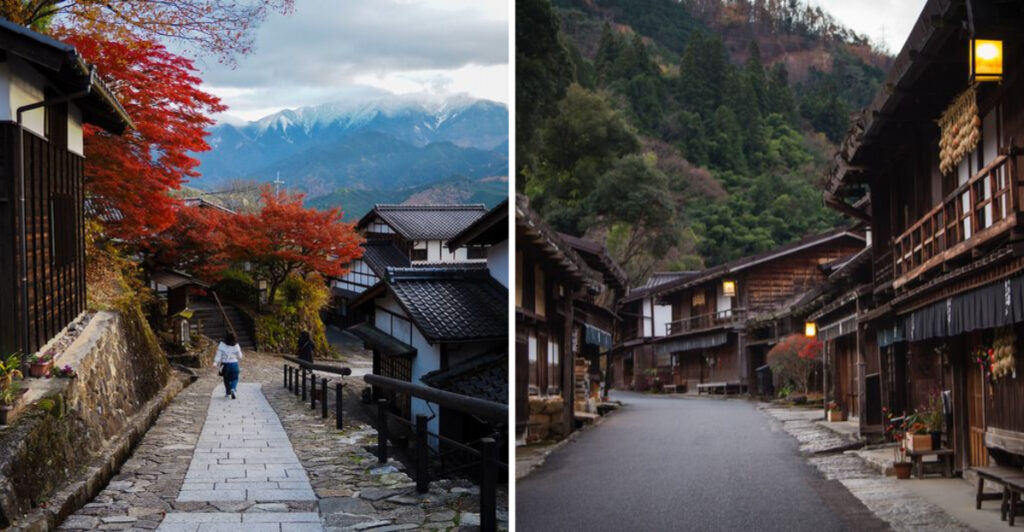Nestled in the tranquil mountains of Japan lie villages where time seems to stand still. These 17 enchanting communities are united by one remarkable secret: their use of ancient building methods. These techniques, passed down through generations, have shaped not only their homes but their way of life. Explore how these distinct practices preserve history, culture, and sustainability in the modern age.
Village of Shirakawa-go
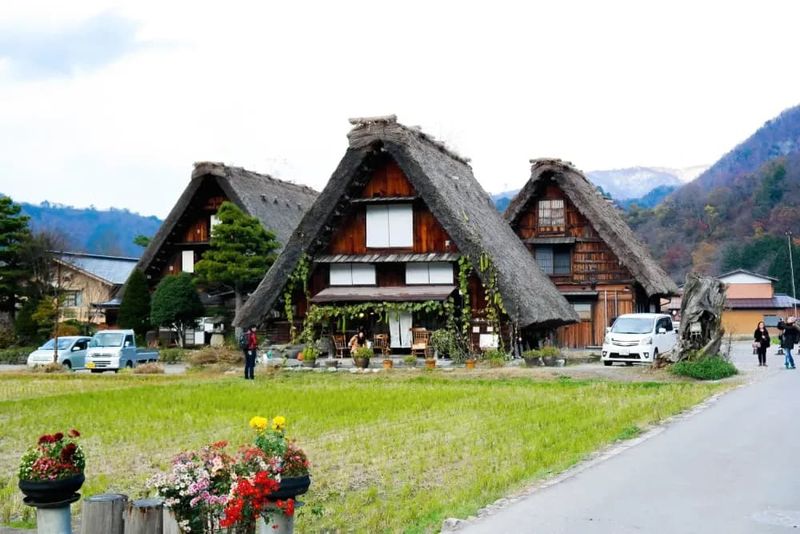
In the heart of the Japanese Alps, Shirakawa-go stands as a testament to resilient architecture. Renowned for its gassho-zukuri houses, the village embodies a unique construction style. Gassho-zukuri, meaning “prayer-hands construction,” features steeply pitched thatched roofs designed to withstand heavy snowfalls.
Each structure, built without nails, uses wooden beams meticulously joined together, reflecting centuries-old craftsmanship. The community’s harmony with nature is evident in the materials chosen, primarily wood and thatch, ensuring sustainability.
Visitors are transported back in time, witnessing a living example of Japan’s cultural heritage. It’s a UNESCO World Heritage Site.
Ainokura’s Traditional Homes
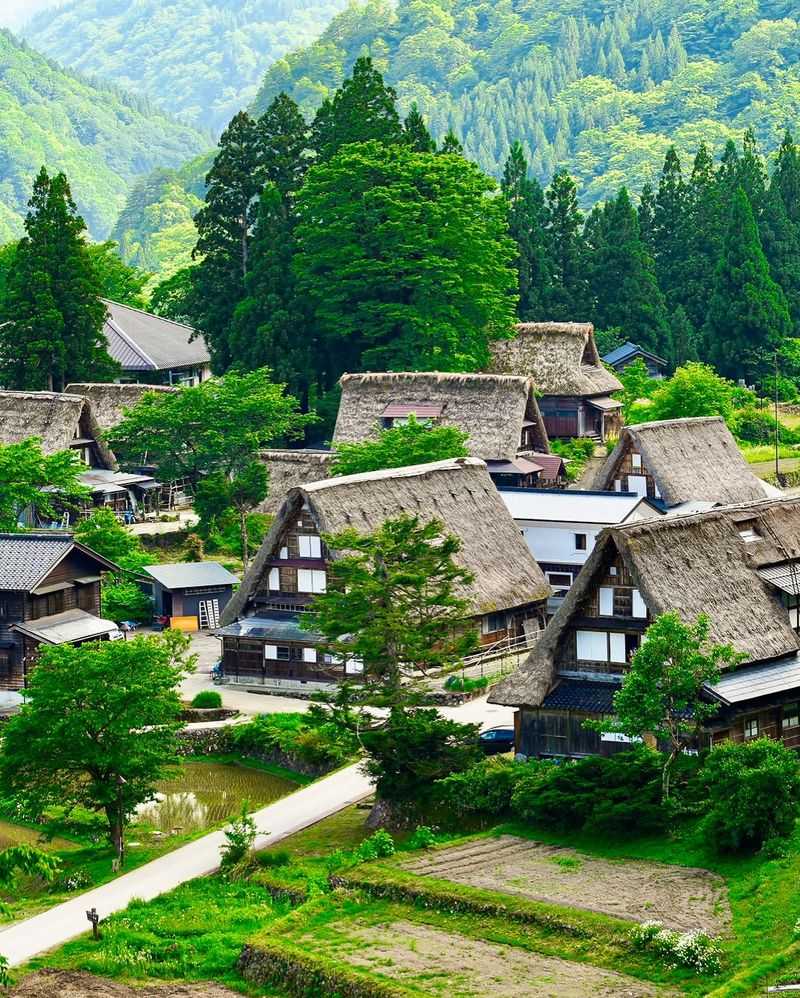
Ainokura, a gem within the Gokayama region, is a village of serenity and tradition. Known for its gassho-zukuri houses, the architecture is crafted to harmonize with the environment. These thatched-roof houses, resembling hands in prayer, adeptly handle the region’s intense snowfall.
The community’s commitment to preserving these structures offers a glimpse into Japan’s past, where building methods were thoughtfully adapted to the climate.
Ainokura’s landscape, dotted with rice fields and surrounded by mountains, enhances the charm, while the villagers’ pride in their heritage is palpable.
Ogimachi’s Historic Streets
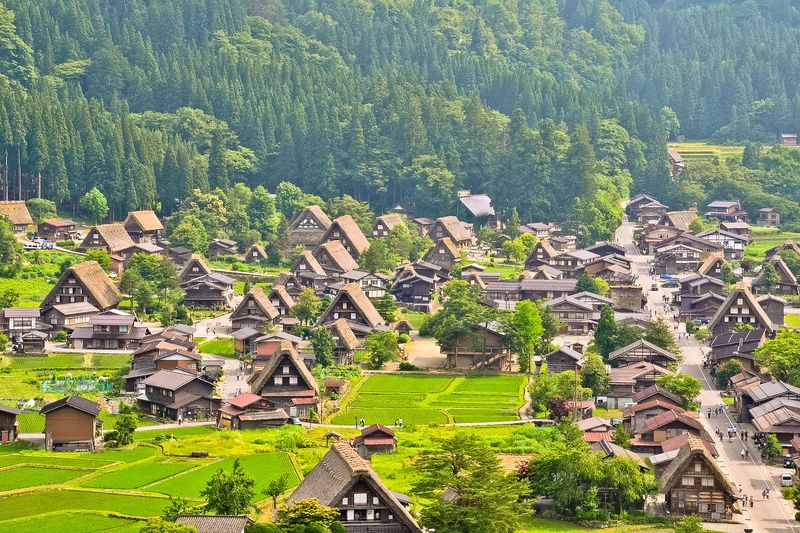
Ogimachi village, nestled in Shirakawa-go, invites visitors to stroll through its historic streets lined with gassho-zukuri homes. These iconic structures, characterized by steep thatched roofs, are ingeniously designed to cope with heavy snowfall, a hallmark of this mountainous region.
Crafted with precision, each house reflects centuries of skilled labor, with wooden frameworks constructed without modern fasteners.
Ogimachi’s commitment to cultural preservation has earned it UNESCO World Heritage status, making it a living museum of Japan’s architectural legacy. Visitors can explore the blend of history and nature.
Gokayama’s Hidden Treasures

Deep within Japan’s remote mountains, Gokayama offers a glimpse into an ancient way of life. The village is famed for its gassho-zukuri houses, an architectural style that resembles hands clasped in prayer.
Constructed to endure severe winter weather, these homes use no nails, relying on timber frames and thatched roofs. The blend of practicality and artistry reflects a deep respect for nature and tradition.
Gokayama’s isolation has preserved its cultural heritage, allowing visitors to experience an authentic slice of rural Japan, where time-honored methods meet breathtaking landscapes.
Miyama’s Thatched Roofs
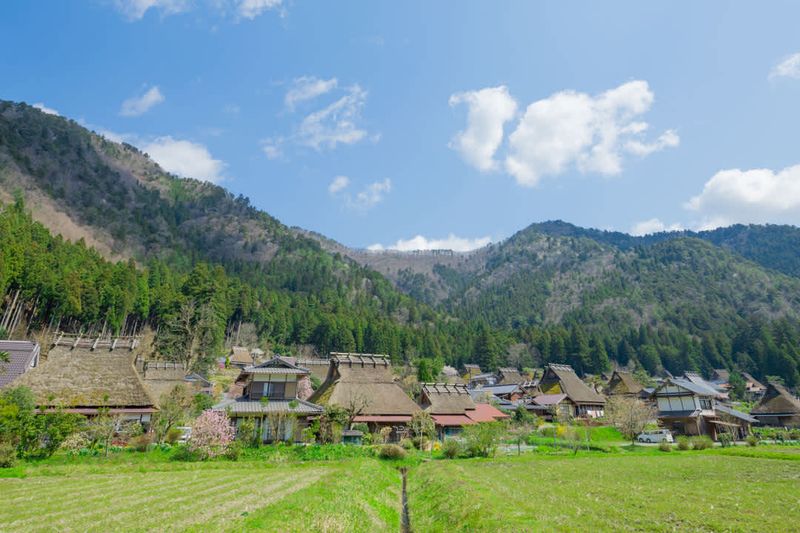
Miyama village, located in Kyoto Prefecture, offers a peaceful escape into a world of traditional thatched-roof houses. These structures, known as kayabuki, showcase a building style that dates back centuries.
Each house is crafted with straw roofs, offering natural insulation and a rustic charm that blends seamlessly with the surrounding hills. The community’s dedication to maintaining these homes provides insight into sustainable living practices.
Miyama’s picturesque setting, combined with its architectural beauty, makes it a favored destination for those seeking tranquility and a touch of history.
Gero’s Wooden Wonders
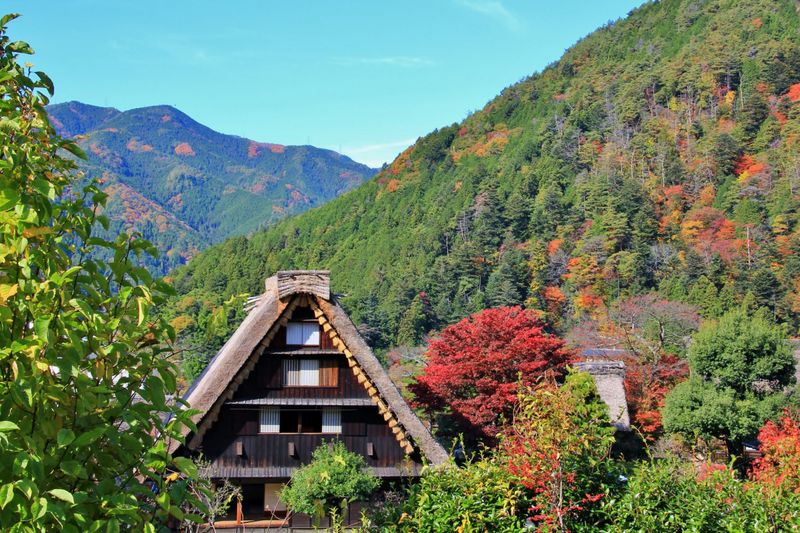
Gero village is celebrated not only for its hot springs but also for its wooden architecture. The traditional homes, built with local timber, reflect a harmonious relationship with the natural environment.
These wooden structures are designed to adapt to seasonal changes, showcasing ingenuity in their construction. With detailed woodwork and functional design, each house is a masterpiece of traditional craftsmanship.
Gero’s scenic beauty, highlighted by the vivid colors of autumn, provides a stunning backdrop to these architectural wonders, inviting visitors to explore the intersection of nature and human creativity.
Tsumago-juku’s Edo-era Charm
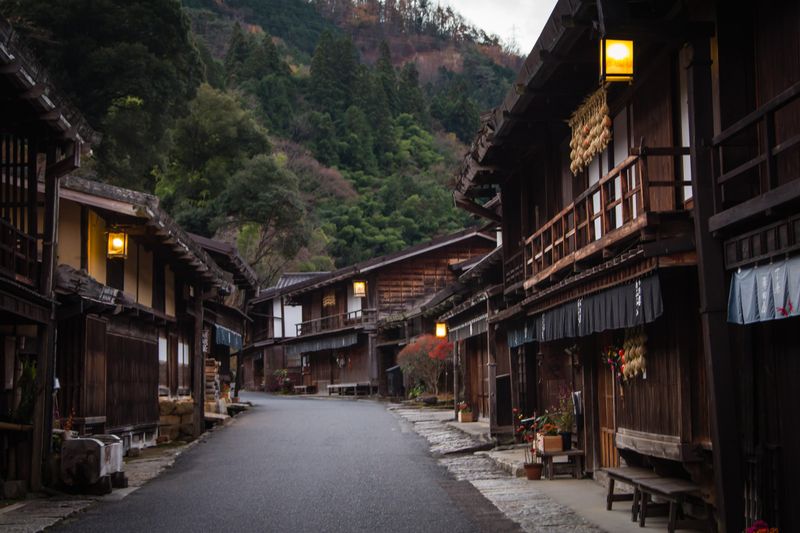
In Tsumago-juku, history whispers through the wooden facades of Edo-era buildings lining its cobblestone streets. This post town, a stop on the ancient Nakasendo Way, offers a window into Japan’s storied past.
The meticulously preserved wooden structures tell tales of travelers and merchants who once passed through, their architecture blending practicality with elegance.
Walking through Tsumago-juku, one feels transported to a bygone era, where the ambiance of traditional inns and tea houses captures the essence of Japan’s historical journey.
Narai-juku’s Timeless Beauty
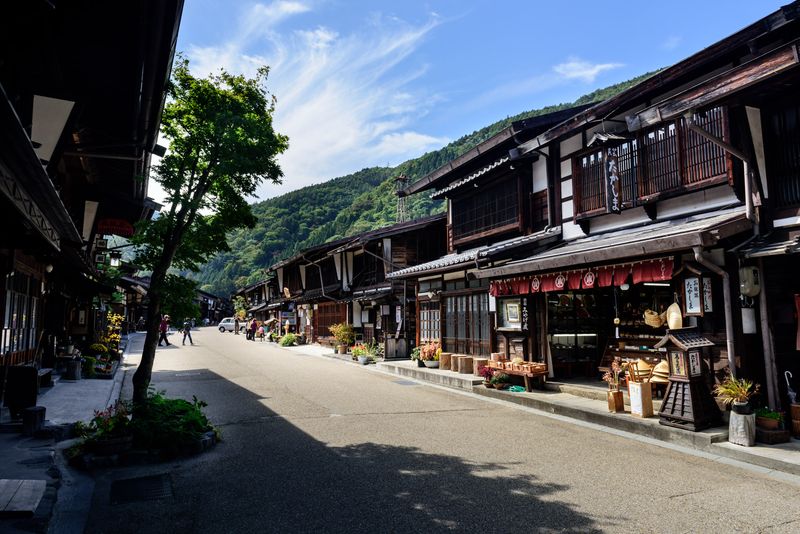
Narai-juku, a picturesque post town on the Nakasendo Road, captivates with its timeless beauty. The village’s wooden buildings, standing proudly along the main street, are masterpieces of Edo-era architecture.
Each structure reflects meticulous craftsmanship, utilizing wood to create an aesthetic that is both functional and elegant. The town’s preservation efforts ensure visitors experience the charm of a traditional Japanese setting.
Narai-juku’s serene atmosphere, set against a backdrop of lush greenery, provides a perfect escape into a world where history and heritage are treasured.
Magome-juku’s Scenic Pathways
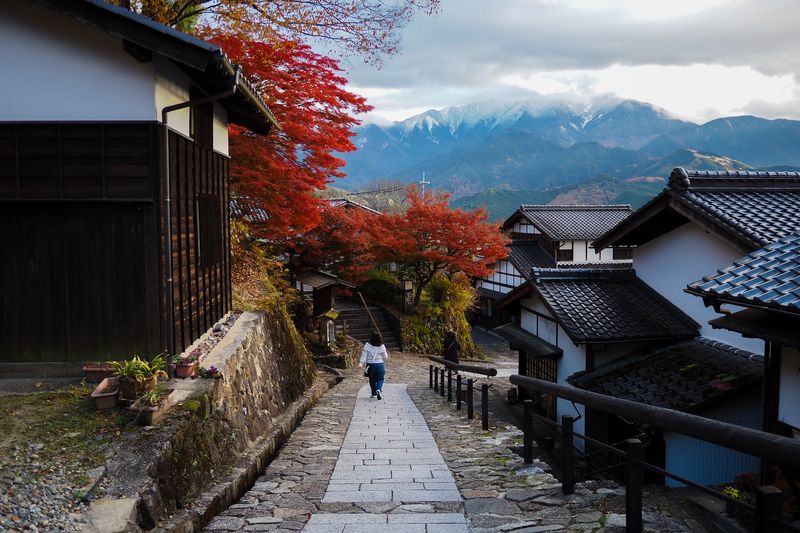
Magome-juku, perched along the Nakasendo Trail, invites travelers to wander its scenic pathways. The village’s wooden houses, harmoniously aligned with the landscape, echo the architectural style of the Edo period.
Each building, crafted with precision, reflects the adaptability of traditional techniques to mountainous terrains. Magome-juku’s cobblestone streets and charming shops paint a vivid picture of historical Japan.
The blend of cultural preservation and natural beauty makes it a favored destination for those seeking a serene journey through Japan’s past, surrounded by the majesty of mountains.
Kurashiki’s Merchant Heritage
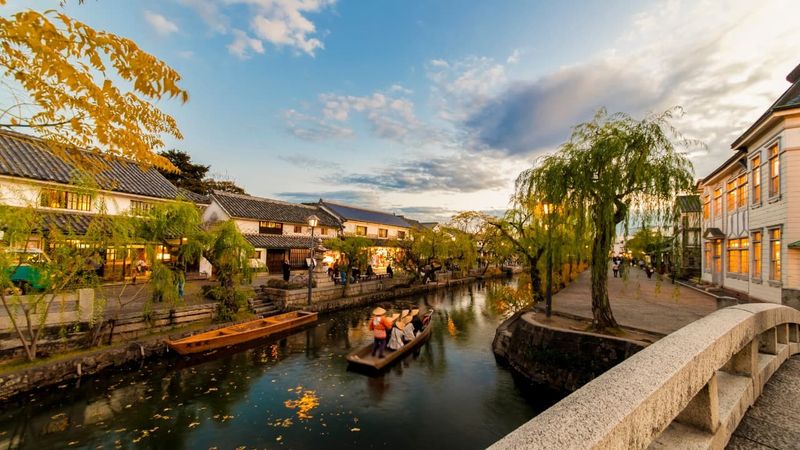
Kurashiki, a city with a rich merchant heritage, showcases beautifully preserved wooden buildings along its historic canals. These structures, once vibrant centers of trade, now stand as monuments to the city’s prosperous past.
The architecture, with its elegant wooden facades and tiled roofs, reflects the influence of both Japanese and Western styles. Kurashiki’s blend of historical and cultural elements creates a unique atmosphere, inviting visitors to explore its storied streets.
The city’s commitment to preservation allows for a journey through time, where history and commerce intertwine beautifully.
Takayama’s Old Town Allure
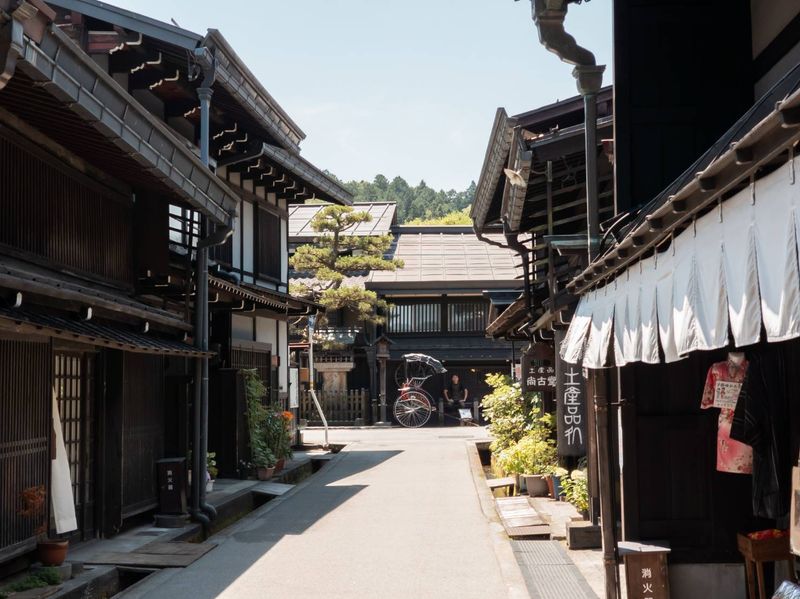
Takayama, nestled in the Japanese Alps, charms with its well-preserved old town district. The village’s wooden buildings, dating back to the Edo period, capture the essence of traditional Japanese architecture.
Crafted with local wood, the structures feature intricate designs that speak to Takayama’s history as a thriving center of commerce and culture. The atmospheric streets, lined with sake breweries and artisan shops, offer a glimpse into the past.
Takayama’s dedication to preserving its heritage is evident, ensuring its allure remains for future generations to appreciate.
Hida’s Craftsmanship Legacy
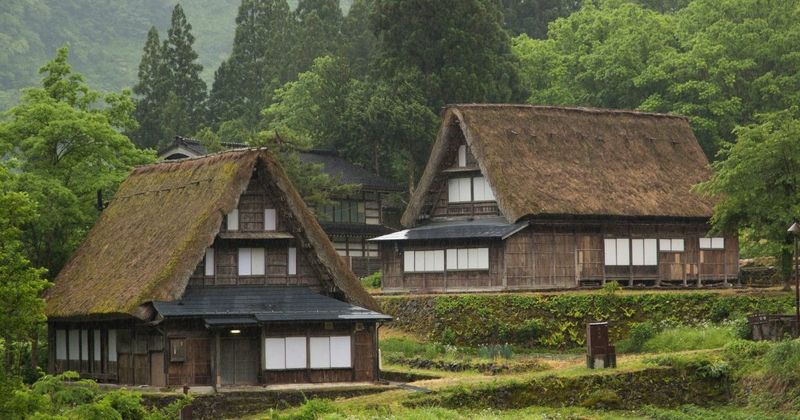
Hida, known for its exceptional craftsmanship, is a village where traditional woodworking thrives. The wooden houses, constructed by master carpenters, highlight the skill and artistry passed down through generations.
Each structure reflects a deep connection to the natural world, using locally sourced timber to create homes that are both robust and beautiful. Hida’s dedication to preserving these crafts ensures the village remains a bastion of Japanese cultural heritage.
Visitors are invited to witness the delicate balance of tradition and innovation that defines Hida’s architectural landscape.
Ine’s Floating Houses
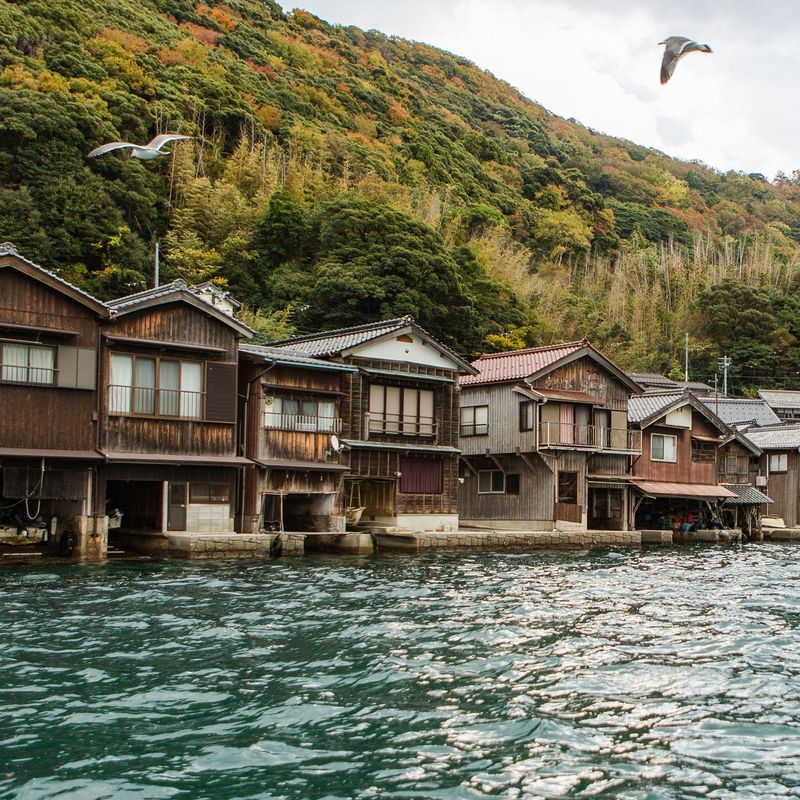
Ine, a charming fishing village, features unique wooden houses that float along the water’s edge. Known as funaya, these boat houses are constructed with a keen awareness of the sea.
The architecture, blending functionality with beauty, allows residents direct access to the water for fishing and transportation. Each house, built with weather-resistant wood, tells a story of life harmonized with the maritime environment.
Ine’s distinctive setting, where the sea laps gently at the doorstep of each home, offers a serene glimpse into a life shaped by the rhythm of the ocean.
Kiso Valley’s Timeless Trails
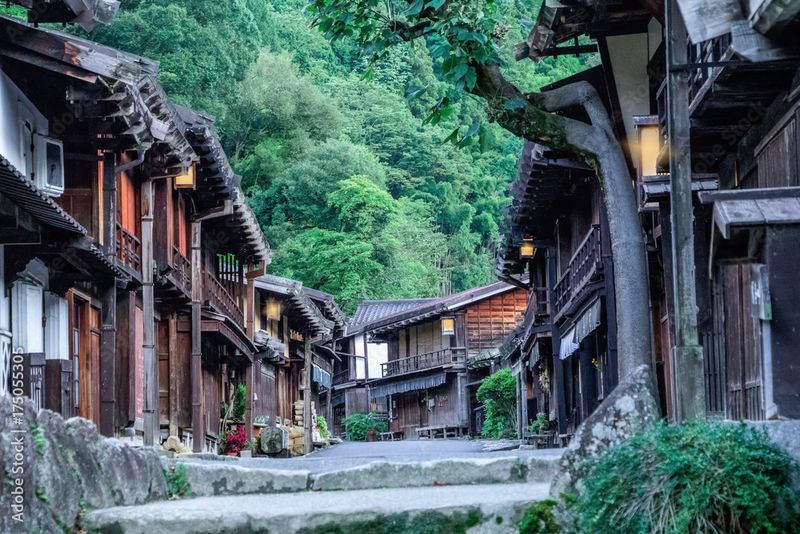
Kiso Valley, renowned for its scenic beauty, holds a collection of villages where traditional wooden houses grace the landscape. These structures, meticulously crafted, embody the spirit of the Edo period.
The architecture here reflects a profound respect for nature, using natural materials to create homes that blend seamlessly with their environment. Kiso Valley’s walking trails, surrounded by lush forests, enhance the experience, offering a journey through both space and time.
The area’s dedication to preserving its history allows visitors to immerse themselves in authentic Japanese culture.
Ouchi-juku’s Thatched Harmony
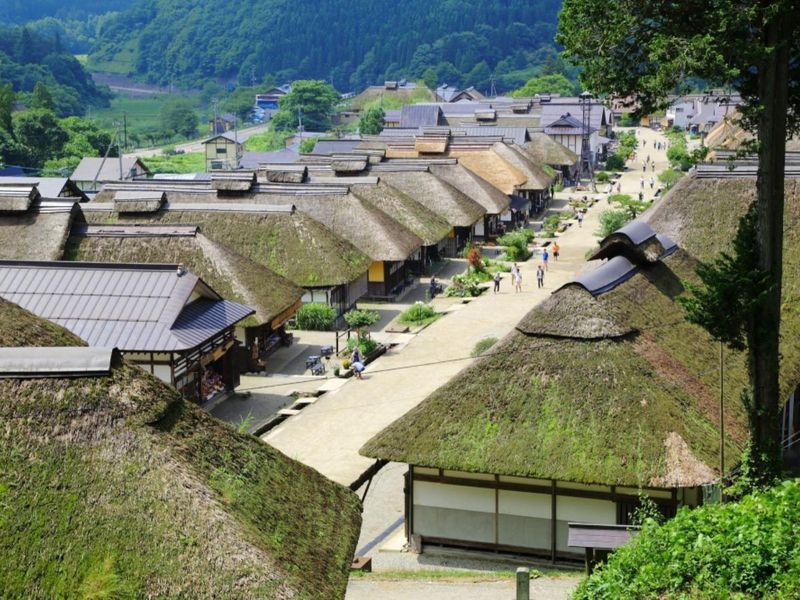
Ouchi-juku, a former post town, captivates with its rows of traditional thatched-roof houses. The village, nestled in Fukushima Prefecture, retains the charm of Japan’s Edo period.
The architecture, crafted with straw roofs and wooden frames, showcases techniques designed to withstand the elements. Walking through Ouchi-juku, one feels the harmony between structures and landscape that defines this enchanting place.
The village’s preservation efforts ensure that visitors can experience a rare glimpse into Japan’s architectural past, where history is woven into every thatched roof.
Kanazawa’s Samurai District
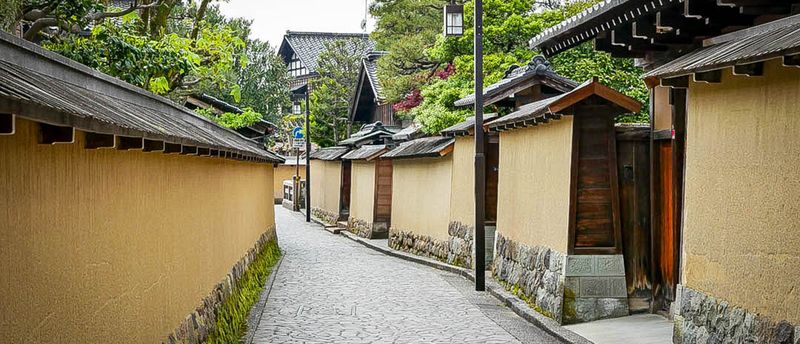
Kanazawa’s Nagamachi Samurai District offers a window into the world of Japan’s warrior class. The traditional wooden houses, once home to samurai, reflect a blend of strength and elegance.
Constructed with precision, these buildings feature wooden facades and tiled roofs that speak to the architectural style of the Edo period. The narrow lanes, surrounded by earthen walls, add to the district’s historical allure.
Kanazawa’s commitment to preserving its samurai heritage allows visitors a unique glimpse into Japan’s feudal past, where honor and tradition shaped everyday life.
Kamikochi’s Alpine Architecture
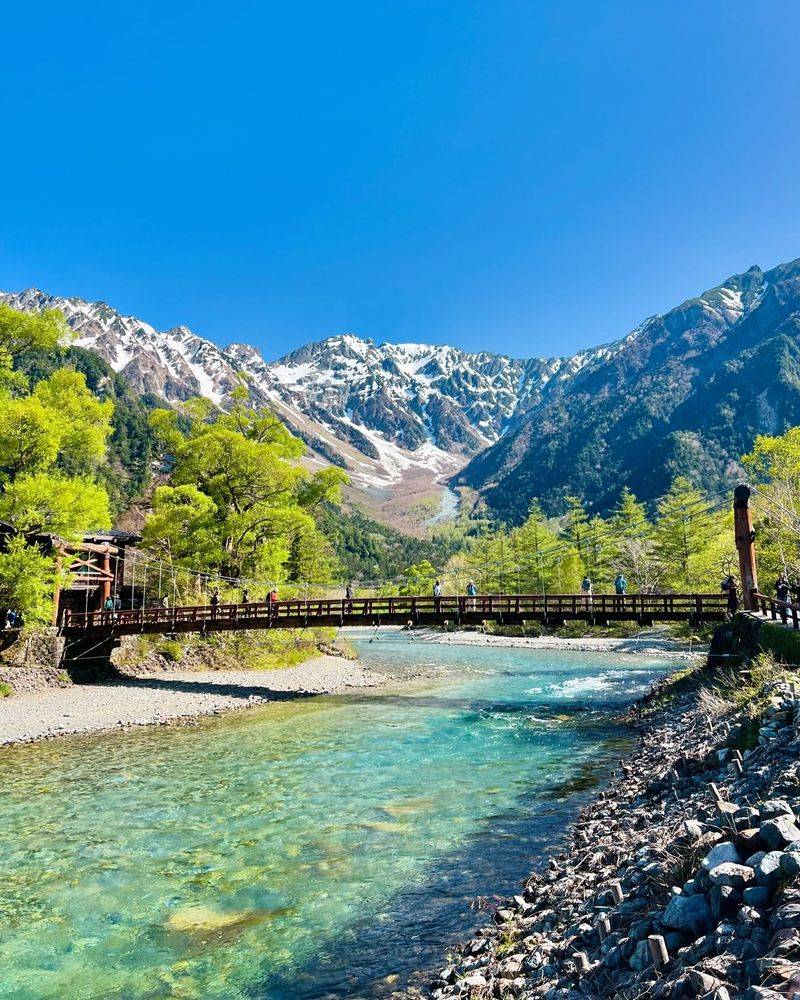
Kamikochi’s alpine allure is not just in its breathtaking landscapes but also in its unique architectural style. Visitors are greeted by rustic wooden buildings that seem to grow organically from the earth. These structures, built without nails, use intricate joinery techniques that speak to a time when craftsmanship was revered.
Walking through Kamikochi, one can feel the history embedded in every beam and plank. The buildings not only withstand harsh alpine conditions but also embody a deep respect for nature. This architectural harmony enhances the village’s serene atmosphere, making it a sanctuary for those seeking tranquility.
Did you know? Kamikochi’s building methods are inspired by ancient techniques used by local carpenters, ensuring durability and aesthetic appeal.

